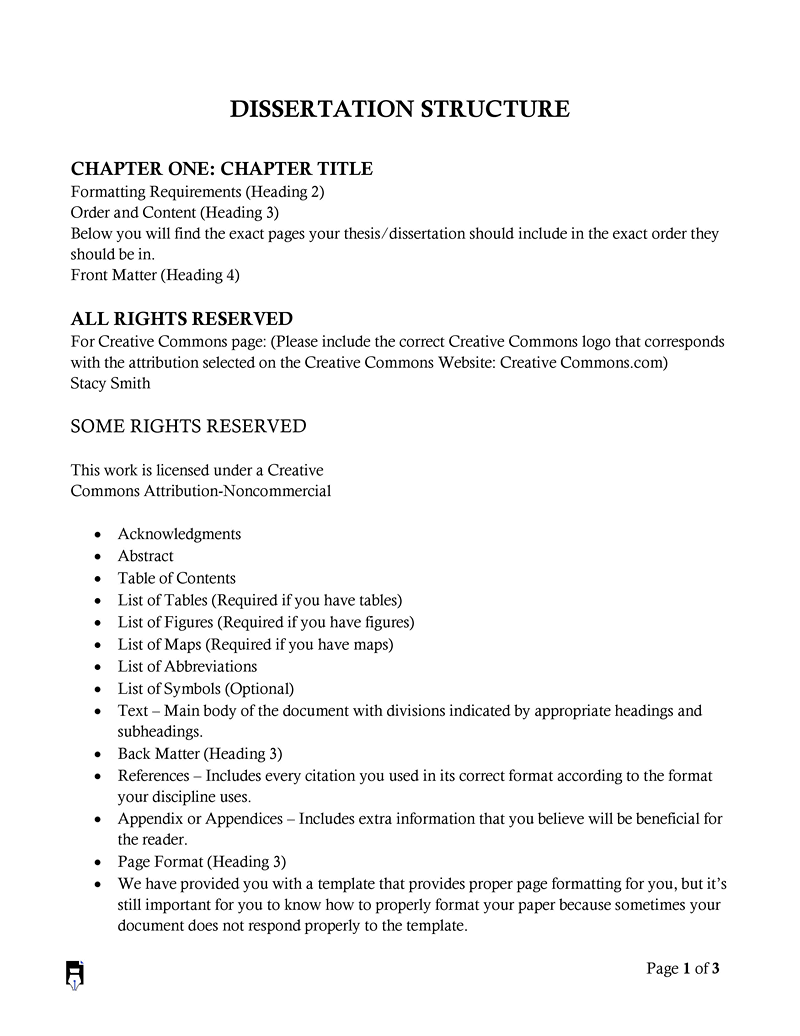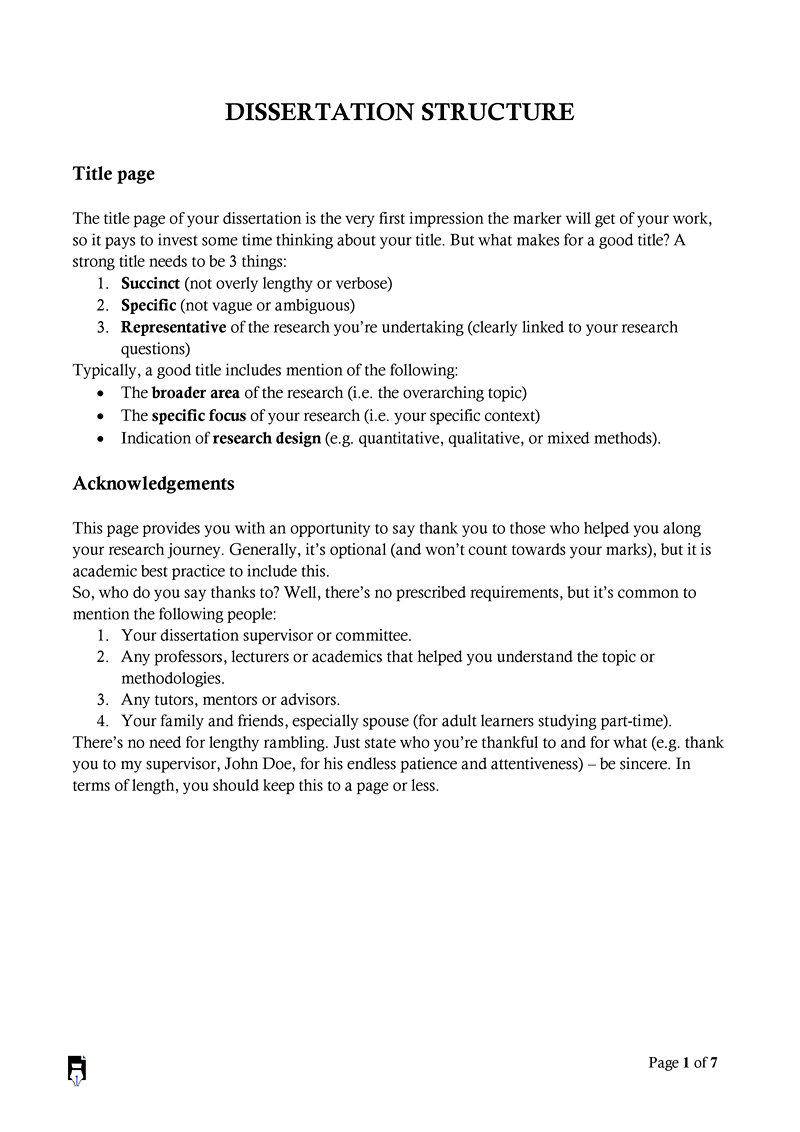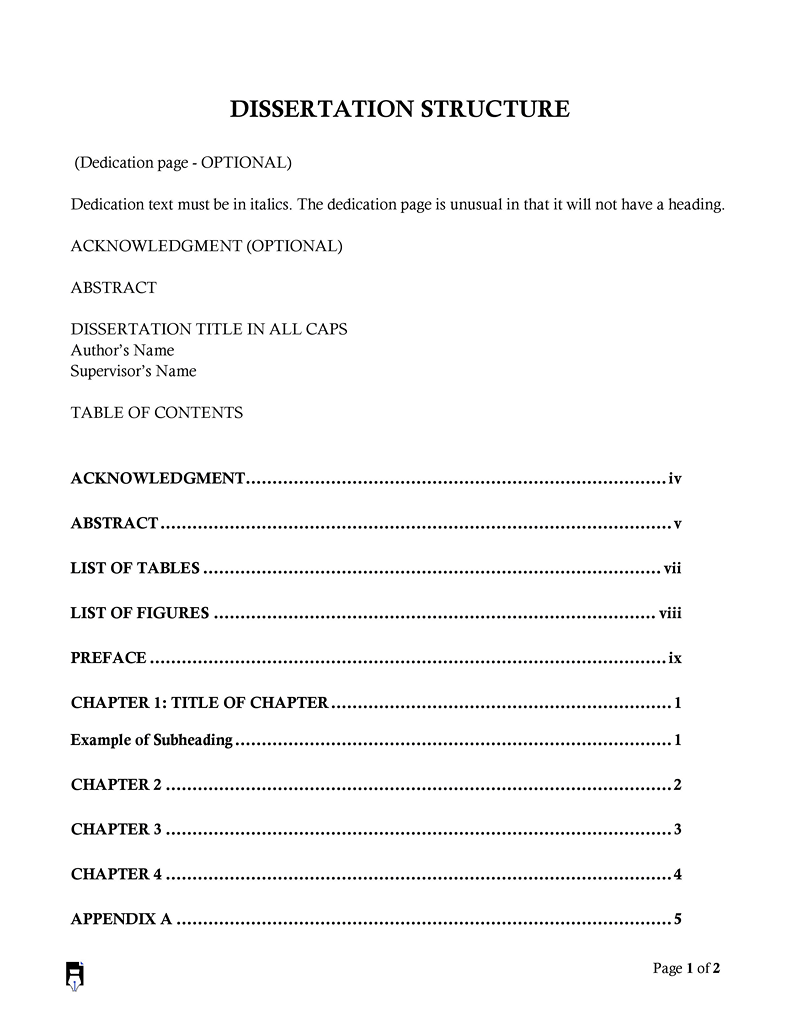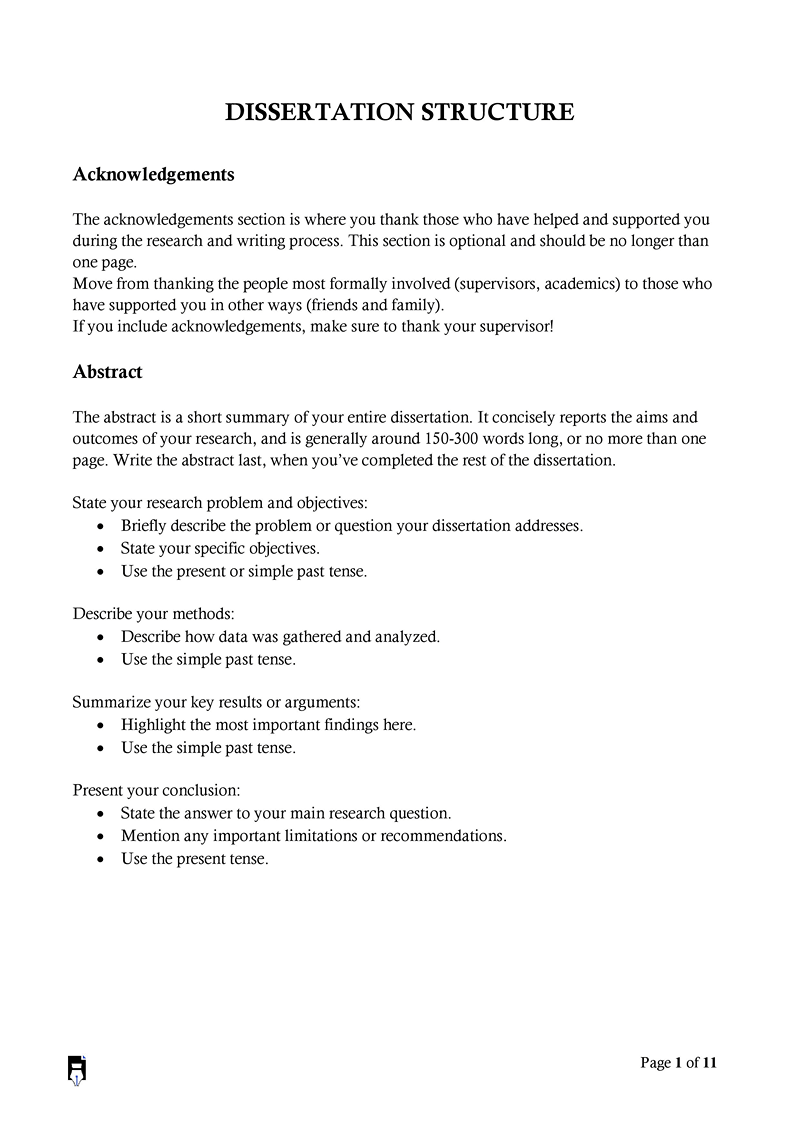A dissertation is an academic document that compiles a student’s research on a particular topic or subject matter as part of the Ph.D. degree requirements.
A researcher earns a Ph.D. degree after submitting and defending his or her dissertation.
A dissertation represents the research capabilities the student has acquired throughout their studies. Dissertations are longer than essays. Also, the topic or subject matter will typically be of the researcher’s choosing. This is because the dissertation should be based on original and independent findings.
The format of the dissertation is usually determined by the university. Dissertations are prepared under the close supervision of supervisors, and therefore they not only guide the student about its contents but also its layout and format.
This article discusses the common components that should appear in a dissertation and the proper format or structure to follow when preparing such a document.
Dissertation Free Templates
Given below are free dissertation templates that you can download:
Dissertation vs. Thesis
The terms dissertation and thesis are often used interchangeably. However, these are different documents.
The main differences include the following:
- A thesis is written to fulfill the requirements for a Master’s degree. However, dissertations are for doctoral degrees.
- There is a stark difference between the terminologies in the UK and the U.S. In the U.S., a dissertation is written as an original research work to earn a doctoral degree, while in the UK and Europe, a dissertation is part of a master’s degree.
- A thesis analyzes the information you collect from your research and relates it to your field of study. This will typically involve collecting information/data, analyzing, and discussing how this information relates to the topic at hand. A thesis is thus used to examine your ability to think critically. Contrarily, a dissertation is used to prove a unique hypothesis, theory, or concept. The theory or concept can be identified from existing research or information sources. Thus other people’s research can only be used for guidance and not for the development of the dissertation. This is because the dissertation should focus on your original contribution to the existing knowledge on a topic.
- Dissertations are lengthy and complex scholarly works. These can be three times longer than a thesis. This is because of the extent of the thoroughness of the background study and research conducted in preparing the document.
Dissertation Format: How to Structure
The format of a dissertation varies with your field of study. A typical dissertation will include at least four or five sections: an introduction to the topic, a review of relevant literature, a methodology section, an overview of the research results, a discussion of the results and their implications, and a conclusion.
Below is an in-depth discussion of these components:
Title page
Each dissertation should have a title page. This ought to be the first page of the document. This page should include the document’s title, your name, department, institution, degree program, submission date, and type of document (dissertation). Other details that may be included in this section include your student ID number, supervisor’s name, and the university’s logo. Your department will specify a layout and format for the title page, and if this is the case, you should adhere to the specified format.
Acknowledgments
Acknowledging the people who helped you in your research and dissertation preparation is important, and you should properly acknowledge them in this section. Examples of groups of people you can include in your acknowledgements include your supervisor, research collaborators, family, and friends. This section may be optional in some cases.
Abstract
An abstract typically summarizes your dissertation in 150–300 words. The importance and value of an abstract cannot be overstated. It introduces your dissertation to the audience. The abstract should cover the main topic, the problem statement or objectives of the research, the methods used in your research, a summary of key results and findings, and a statement of your conclusions. As a result, it is advisable to write the abstract once you have completed all the other sections of your documents.
Table of contents
A table of contents simplifies navigation when reading the document by giving the reader an overview of what it entails. The table of contents should indicate the chapters, including subheadings (preferably levels 2 and 3 of subheadings). In MS Word, you can generate the table of contents automatically. If you used the appropriate heading styles when titling all the key sections of your dissertation, they would be automatically included in the table of contents.
List of figures and tables
The list of figures and tables in the document should also be included. Create a list of the figures and tables with specific page numbers. This helps your readers navigate through the figures and tables easily. This list can be generated automatically in MS Word by using the “Insert Caption” command.
List of abbreviations
You will typically have to use multiple abbreviations that may not be known to everyone. As a result, it is critical to include a list of all abbreviations and their definitions. The abbreviations should be listed alphabetically so that they are easy to find while reading the document.
Glossary
A glossary should be used to define special terms that you have used in your research and that your readers may not be familiar with. The terms should be listed alphabetically, and the descriptions should be brief.
Introduction
The introduction chapter provides an overview of the research. It highlights the topic, purpose, and relevance to the field of study. It should be engaging enough to prompt the readers to want to know more. A satisfactory introduction chapter will;
- Introduce the topic and define the scope of your research
- Provide the necessary background information by discussing the state of existing research on the topic of research
- Show the dissertation’s relevance to a broader issue
- Outline your research questions and objectives
- Provide an overview of the rest of the chapters of your document
Literature review
A literature review examines academic journals, books, dissertations, conference proceedings, and other materials that are pertinent to a certain topic, field of study, or theory and gives context for a dissertation by outlining prior research. The information gathered through analyzing different sources to write your literature review is used to provide a justification for your research. The main purpose of the literature review is to:
- Build your knowledge of a particular topic.
- Identify a gap in the existing knowledge on a particular topic.
- Helps to identify suitable research methods for your own research.
- Critically evaluate the current knowledge on a particular subject.
To achieve these objectives, you should ensure that you find relevant and credible sources when undertaking the literature review. Also, it involves critically analyzing each source and identifying connections between the sources that are relevant to your hypothesis. Connections can be made through patterns, themes, gaps, or conflicts between the sources.
Methodology
The methodology chapter discusses the methods used to conduct research. This chapter is needed to validate and authenticate your findings. It can address the following:
- The overall research approach and type of research. The research can be quantitative, qualitative, experimental, or ethnographic.
- Methods of data collection must be clearly outlined. Surveys, interviews, archives, experiments, etc are various examples of data collection techniques.
- The specific details of the adopted methodology should be explained such as when and where the research was conducted and who was involved.
- Any tools and programs used for the analysis like lab equipment, machines, computer programs, etc should be mentioned.
- A detailed explanation of the data analysis methods is a crucial part of this chapter. These methods include statistical analysis, discourse analysis, etc.
- Obstacles or challenges faced during the research should also be explained in this chapter. You should state the challenges and describe how they were overcome.
- At the end, you should give a justification for the methodological approach you chose.
Results
The results chapter of a dissertation is meant to present your findings. This chapter contains a detailed and thorough presentation of results obtained through various techniques used for data analysis. Each result should be provided with relevant descriptive statistics (e.g., standard deviation) and inferential statistics (e.g., test statistics). You can also use charts, tables, and graphs to report the results.
This section is often structured based on discipline or field of study. It is a stand-alone chapter for quantitative and experimental research studies, which can be combined with the discussion chapter for research that is based on qualitative data.
Discussion
Results or findings must be analyzed and interpreted to provide conclusions for your dissertation. This is accomplished in the discussion chapter. Here you can evaluate the extent to which research goals were accomplished. The results are interpreted and discussed in this section in relation to the hypothesis and research questions. You should offer explanations and state probable limitations for any unexpected results.
Conclusion
The conclusion chapter is meant to answer the main question of the research. This chapter can be short or detailed, depending on the discipline of study. The conclusion should state how your findings contribute to the existing knowledge on the subject. You can also include your recommendations for further research.
Reference list
All the citations you used in your dissertation should be listed in a reference list. It is a formal way to acknowledge all your sources of information and avoid plagiarism. Additionally, you should confirm that the referencing follows the specific style indicated by your university or department.
Appendices
An appendix can be added to your dissertation to include supplementary information that could not be included in the main sections of the document. This can include photos, tables, survey questions, interview transcripts, figures, etc.
Note: You can always prepare your dissertation using a template. It outlines all the essential components needed to write an excellent dissertation. This streamlines your work and spares you the time and labor required to format it properly.
Final Thoughts
A dissertation is a scholarly writing that is part of the mandatory requirements for receiving a doctoral degree at most universities. A dissertation is a presentation of original research that is conducted as part of doctoral studies. The study presents the results of original research and makes a notable contribution to the field. A researcher earns a Ph.D. after submitting and defending his or her dissertation.
Thus, it has great value in academia. Its preparation typically involves extensive research and analysis. It is used to measure your understanding and competency in your field of study. You should always discuss the university’s requirements with your supervisor because various departments will typically have their own unique guidelines on how to structure a dissertation. Once you are familiar with what is expected of you, you can choose to use a template with the proper format.



